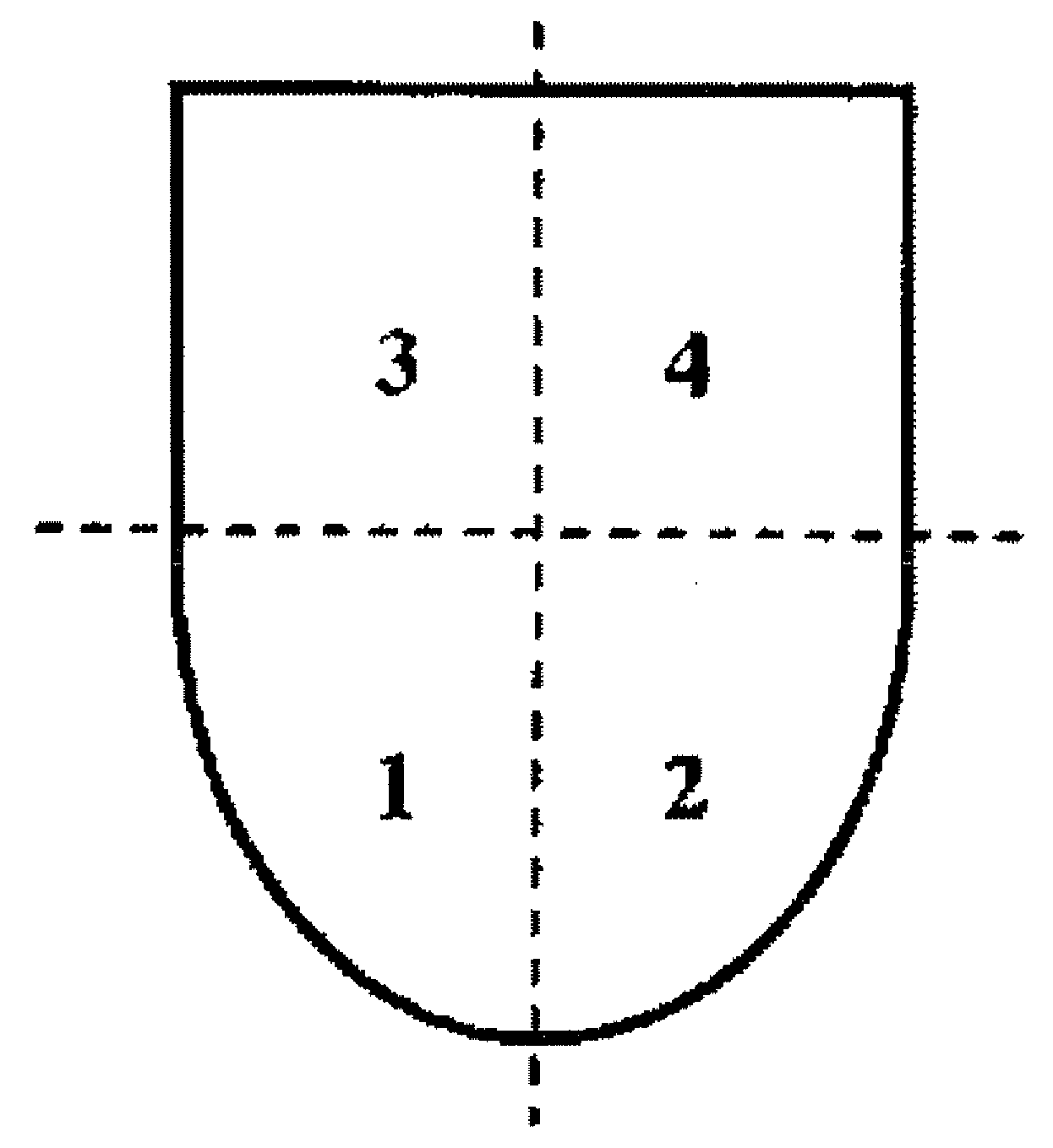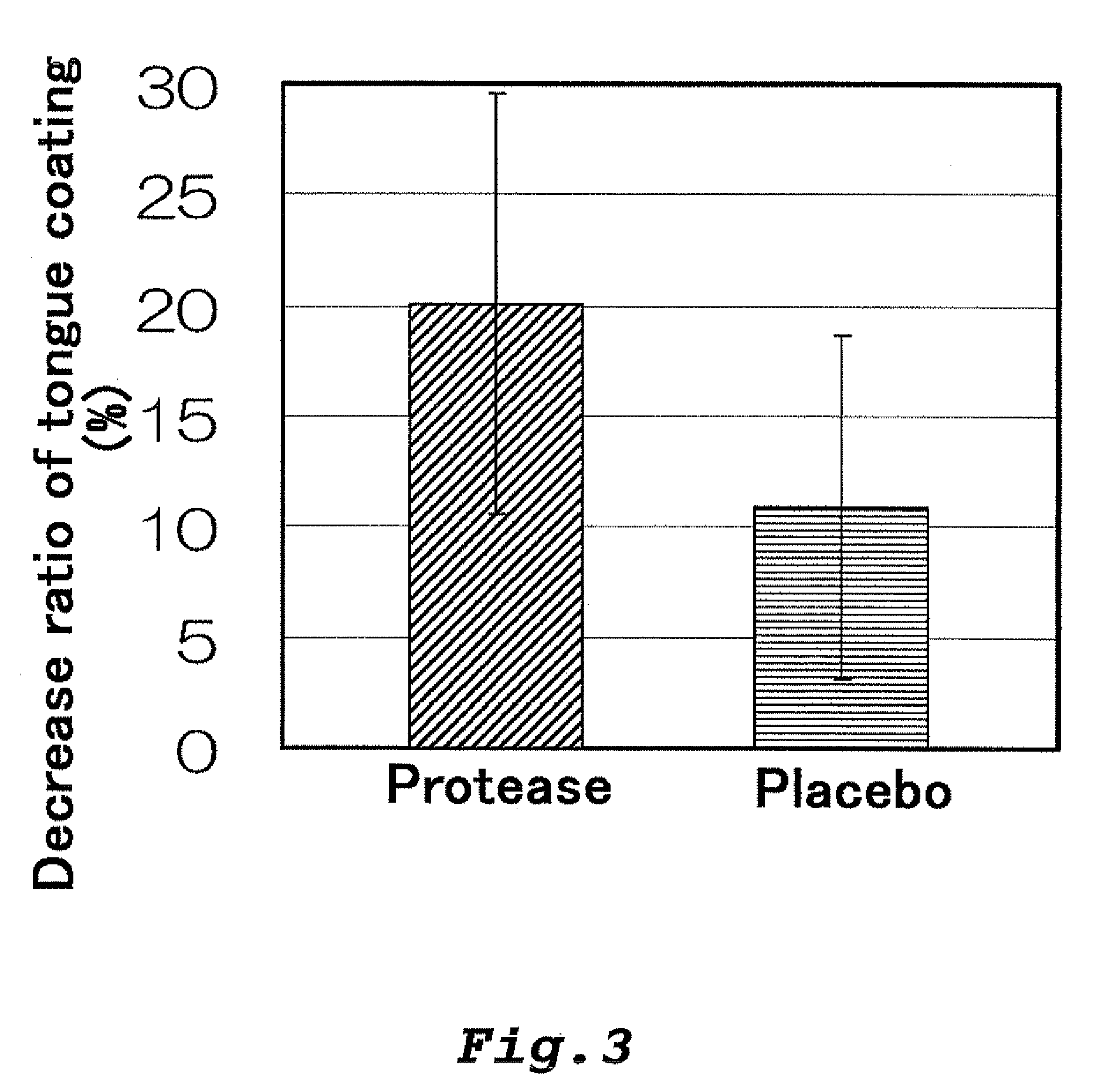Enzyme-containing candy
a candy and enzyme technology, applied in the field of enzyme-containing candy, can solve the problems of unsuitable industrial production, uneven mixture, and inability to obtain candy with enzyme activity, and achieve the effect of low cos
- Summary
- Abstract
- Description
- Claims
- Application Information
AI Technical Summary
Benefits of technology
Problems solved by technology
Method used
Image
Examples
examples 1-3
Production of Papain-Containing Sugarless Candy
[0244]Papain-containing sugarless candies were produced. The outline will be explained. First, candy base materials were dissolved in a large pot, and moisture was removed in a vacuum state, and additives were rapidly mixed in a small pot, and the mixture was cooled on a cooling iron plate and shaped to obtain sugarless candies.
[0245]Specifically, 300 kg of reduced palatinose, 185 kg of reduced starch syrup (DE40), and 100 kg of water were placed in a tank for dissolving the raw materials, and heated to 140° C. and mixed.
[0246]The candy base materials were completely dissolved and sufficiently mixed to uniform, and then the candy base materials were temporally stored in a stock tank.
[0247]The total amount of the candy base materials was transferred to a heating can of the Super Film Cooker, and then the temperature of the candy base materials was adjusted to 145° C.
[0248]The total amount of the candy base materials was placed in a vacuu...
example 1
Measurement Example 1
Measurement of Enzyme Activity of Papain-Containing Sugarless Candy
[0255]The papain-containing sugarless candies produced in Examples 1 to 3 were hermetically-sealed in an airtight pouch and tightened by a vise and thereby crashed to be in powder state. Each of the powder candies was dissolved at 4° C. in Buffer B described in an instruction of PROTAZYME AK TABLETS to obtain a solution. The obtained solution was appropriately diluted, and the papain activity was measured by using PROTAZYME AK TABLETS according to the method described in the instruction thereof. As a result, when 0.25 kg of papain (1 part by weight of papain based on 100 parts by weight of the candy base material) was added (Example 1), the ratio of the remaining activity was 70%. When 0.50 kg of papain (2 parts by weight of papain based on 100 parts by weight of the candy base material) was added (Example 2), the ratio of the remaining activity was 75%. When 0.75 kg of papain (3 parts by weight ...
examples 6 to 7
Investigation of Temperature at the Time of Enzyme Addition in the Production of Enzyme-Containing Candy
[0265]Candies containing bromelain and actinidine were produced. The outline will be explained. First, the candy base material was dissolved in a large pot, and moisture was removed under atmospheric pressure state, and in a small pot, additives were rapidly mixed with them, and the materials were cooled on a cooling iron plate and shaped to obtain candies.
[0266]Specifically, 324 kg of sugar, 216 kg of reduced starch syrup (DE40) and 100 kg of water were placed in a tank for dissolving the raw materials, and heated to 150° C. and mixed. The candy base materials were completely dissolved and sufficiently mixed to uniform, and then the candy base materials were temporally stored in a stock tank.
[0267]The total amount of the candy base material was transferred to a kneader, and then, with keeping the candy base material at 150° C., the moisture was removed under atmospheric pressure ...
PUM
| Property | Measurement | Unit |
|---|---|---|
| dissolution temperature | aaaaa | aaaaa |
| dissolution temperature | aaaaa | aaaaa |
| temperature | aaaaa | aaaaa |
Abstract
Description
Claims
Application Information
 Login to View More
Login to View More - R&D
- Intellectual Property
- Life Sciences
- Materials
- Tech Scout
- Unparalleled Data Quality
- Higher Quality Content
- 60% Fewer Hallucinations
Browse by: Latest US Patents, China's latest patents, Technical Efficacy Thesaurus, Application Domain, Technology Topic, Popular Technical Reports.
© 2025 PatSnap. All rights reserved.Legal|Privacy policy|Modern Slavery Act Transparency Statement|Sitemap|About US| Contact US: help@patsnap.com



